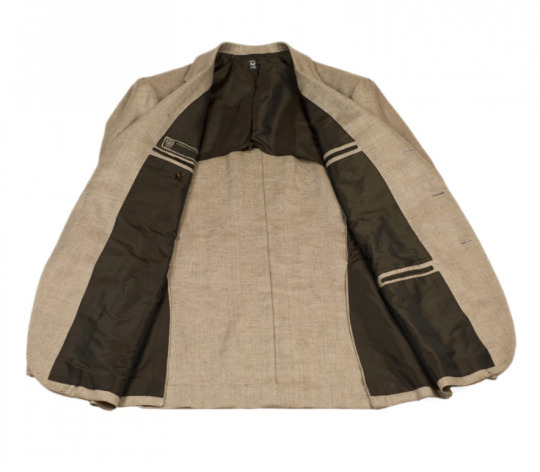I don't know anything about architecture, but I know a little about clothing, and I can say this is not true in menswear. Our idea of what constitutes "classy" in clothing is mostly shaped by the social practices and tastes of the ruling class. It's not timeless, but rather sociologically dependent.
For instance, the suit is relatively stable, partly because it derives its traditions from the stability of the British upper-class lifestyles. This is a world of mostly men’s activities, such as hunting, horse riding, a love for country homes and their comforts, London business meetings, military duty, and elite schooling.
But before the suit became ascendant around the late 19th/ early 20th century—rising with the upwardly mobile class that came through industrial capitalism—the "classy" uniform was the frock coat. British men in high positions, such as finance and law, wore the frock coat (pic 1). Men who occupied the lower rungs of the social and professional ladder—such as clerks and administrators—wore the fustian lounge suit (pic 2).
IMO, one should not take taste as some kind of objective construct, but rather as a sociological idea.
What is more plausible? That the elite class just happened to have stumbled upon the magical formula for a classy outfit—a dark suit with a white shirt and dark tie (pic 3)—or that we read such things as "classy" because they are associated with the ruling class? And that some other combination–a dark suit with a black dress shirt and dark tie (pic 4)—connotes something less classy because other people did not figure out this combination? Or that we think of this as less classy because it's the taste of the "lower classes?"



For instance, the suit is relatively stable, partly because it derives its traditions from the stability of the British upper-class lifestyles. This is a world of mostly men’s activities, such as hunting, horse riding, a love for country homes and their comforts, London business meetings, military duty, and elite schooling.
But before the suit became ascendant around the late 19th/ early 20th century—rising with the upwardly mobile class that came through industrial capitalism—the "classy" uniform was the frock coat. British men in high positions, such as finance and law, wore the frock coat (pic 1). Men who occupied the lower rungs of the social and professional ladder—such as clerks and administrators—wore the fustian lounge suit (pic 2).
IMO, one should not take taste as some kind of objective construct, but rather as a sociological idea.
What is more plausible? That the elite class just happened to have stumbled upon the magical formula for a classy outfit—a dark suit with a white shirt and dark tie (pic 3)—or that we read such things as "classy" because they are associated with the ruling class? And that some other combination–a dark suit with a black dress shirt and dark tie (pic 4)—connotes something less classy because other people did not figure out this combination? Or that we think of this as less classy because it's the taste of the "lower classes?"




another example that comes to mind is jazz music. once considered "the devil's music" and now considered to be "classy music." those early jazz tunes did not change; only the audience.
@ianjhurst @RJdeMans @localabamon I should add that I am able to know these things because of my naturally superior brain and higher education (I learned the history of black slaves in the United States in 7th grade)
• • •
Missing some Tweet in this thread? You can try to
force a refresh

 Read on Twitter
Read on Twitter





























